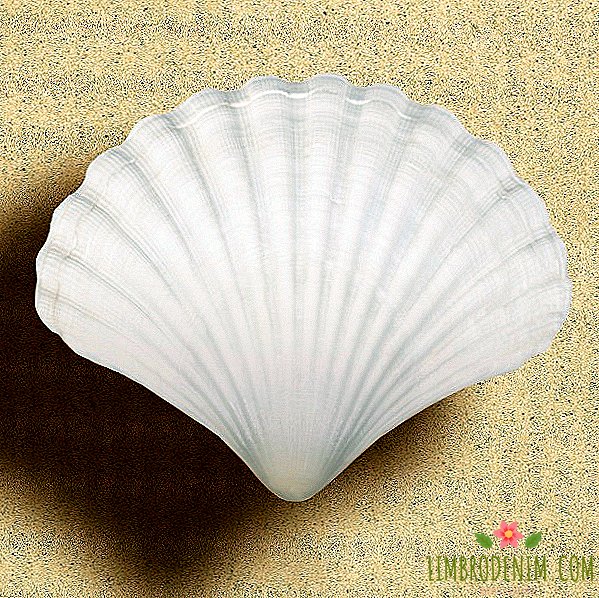From androgens to dopamine: How hormones affect skin condition
Hormones regulate almost all processes. in humans. Each of them may have several functions, and between them they interact through the most complex algorithms. Disruption of the synthesis of a single hormone can lead to a whole cascade of health problems - and even hormonal disorders affect the skin. They can manifest themselves in different ways: like acne, dryness, peeling, or too early loss of elasticity.
To make the skin feel good, it is worthwhile not to follow the level of a specific hormone, but rather the general hormonal balance, under the supervision of a competent and trustworthy doctor. Irina Vyatkina, Ph.D. in medical sciences, a gynecologist and endocrinologist at the Clinic of Marina Ryabus, told us about what hormones and how they affect the skin condition.

Androgens
Testosterone and its derivatives are usually called the male hormones - but in fact both all have androgens and “female” estrogens, and only their number differs. Androgens stimulate connective tissue cells that produce collagen - as a result, the deep layers of the skin are renewed and its elasticity is maintained.
The lack of androgens, including age, reduces the protective function of the skin and the speed of its renewal - it gradually loses its elasticity and density, becomes drier and thinner. An excess of androgens - for example, in the last phase of the menstrual cycle, a few days before the menstruation - causes an increase in the work of the sebaceous glands, which makes the skin oily and prone to rashes.
Estrogen
The estrogenic female phenotype depends on estrogen - for example, the tendency to accumulate fat on the hips and other features of the figure. Estrogens are involved in the renewal of skin and hair cells. At the normal speed of this process, the skin remains supple and moisturized - and it is well reduced after sudden weight changes.
If there is an excess of estrogen, problems with blood vessels may appear (for example, varicose veins or spider veins on the legs), and body weight may also increase dramatically. Lack of estrogen in women may be manifested by a decline in strength, excessive and uncharacteristic hair growth, a decrease in libido.
Progesterone
Each month, progesterone prepares the female body for pregnancy, and if it has arrived, it helps to preserve and bear the child until this function is taken over by the placenta. The work of this hormone affects the appearance: an increase in progesterone levels leads to fluid retention and edema. In addition, the permeability of the vascular wall increases, and as a result, the skin becomes more tensile and prone to rashes, the likelihood of pigmentation increases. An extra pair of kilograms just before menstruation is due to progesterone. Thanks to this hormone and for all the favorite symptoms of PMS: irritability, temper, touchiness, tearfulness and lethargy.
Increasing the level of progesterone in the last phase of the menstrual cycle is the norm. It is possible to suspect that it is too much on other days, if there is a clear stretch of skin, swelling, increased cellulite (this happens due to fluid retention), mood swings, hyperpigmentation. Too long periods, brittle nails and hair may indicate a lack of progesterone.

Prolactin
Primarily, this hormone is responsible for the formation of breast milk and is actively synthesized during lactation - but its level may also increase in stressful situations and under emotional stress. Its excess provokes swelling, chest pain, skin tendency to oily skin and rashes. Deficiency can lead to dry skin, headaches, loss of strength. The only indirect plus for prolactin for the skin is that it enhances the production of oxytocin.
Oxytocin
This hormone is responsible for the feeling of tenderness and affection, and in the largest quantities it is produced under the influence of prolactin after birth - this explains the instantaneous wave of love for the newborn that occurs in some women. Oxytocin increases local (on the skin surface) immunity and reduces the risk of rashes. This hormone utilizes glucose, namely sugar - the main food of pathogenic bacteria, and the smaller it is, the lower the risk of inflammation.
Melatonin
Well-being and freshness are hardly possible without normal sleep, and melatonin is responsible for its quality. Its synthesis occurs at night, approximately from midnight to four in the morning, in a dream and only in complete darkness. “Owls”, who are not sleeping at this time, should be especially careful to follow the level of melatonin.
Melatonin neutralizes the destructive effects of oxidative processes - it binds free radicals, which are formed during the oxidation, for example, of fats. Oxidative stress is one of the main causes of visual aging of the skin (loss of luster and elasticity), so the skin condition depends directly on the level of melatonin. The level of melatonin is closely related to the level of another important hormone - cortisol, and it is precisely the smooth change in their concentrations that takes us from the state of sleep to wakefulness, when the daytime comes. If you sleep in the light, cortisol in the body becomes more and less melatonin.
Cortisol
Cortisol is called stress hormone, but it is involved in all metabolic processes - in the event of stress, it is responsible for the instantaneous mobilization of the body. If cortisol is in excess, then it really affects us destructively. Its level depends, for example, carbohydrate metabolism and insulin production, and its excess can lead to a typical redistribution of fat in the body. At the same time, the face, neck, upper shoulder girdle, and the legs and pelvis lose weight disproportionately.
With increasing levels of cortisol, acne appears, peeling, skin becomes oily and thinned, the risk of hyperpigmentation increases. Damage heals longer, leaving behind scars and age spots. In addition, cortisol causes swelling, makes hair brittle, can lead to seborrhea and even hair loss.

Dopamine
This hormone goes hand in hand with cortisol - it is called the "hormone of joy." During natural aging, the level of dopamine decreases - and the problem is, of course, not in aging itself, but in the associated risks of disease and general malaise. Dopamine deficiency can be seen by impoverished facial expressions, lethargy, stoop, stiffness, loss of dexterity and plasticity.
Insulin
Insulin is known to be responsible for the level of glucose in the blood, and the development of resistance to it is associated with one of the most terrible diseases - diabetes. In the already developed diabetes mellitus, complications are terrible in the first place - from the side of both the heart and large vessels, and the capillaries, which also feed the skin. In severe cases, the violation of this process leads to necrosis of the tissues of the feet and may result in amputation.
Maturing problems with insulin levels can externally manifest as hyperpigmentation, a decrease in the protective function of the skin, a tendency to inflammation, darkening of certain areas - for example, in the armpits and on the neck.
Thyroid Hormones
Thyroid hormones are involved in a variety of processes - they regulate metabolism, synthesis of vitamin A, the rate of absorption of oxygen. If thyroid function is reduced, dryness, yellowness, marbling of the skin appear. Hair falls out, nails break and exfoliate, and hair of the outer third of the eyebrows may fall out. If the thyroid hormones are in excess, the hair becomes thin, soft and oily, and the skin becomes oily, hot, with excessive sweating. Often this condition is accompanied by hyperpigmentation.
Photo: Africa Studio - stock.adobe.com, witoon214 - stock.adobe.com, Arthur Mustafa - stock.adobe.com





